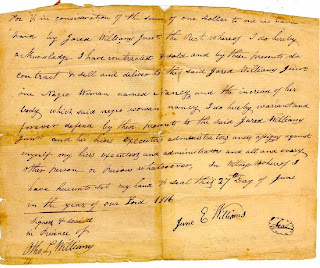 |
| Did you know that there were bills of sale for slaves in 18th century? |
Here are the details usually expected off the document:
Names or those involved
This is of course needed to make sure that all those involved in the sale of the vehicle. This should include other minor details about both parties like age, and the address of each individual (and or a company whichever the case may be).
Odometer reading
This is very important since this will determine the mileage of the vehicle at the time it was sold. Billions of dollars are lost from consumers from fraudulent odometer reading. This would make it seem that the car has lesser mileage which is going to make the car more expensive. If an investigation is launched and you do not have any proof that you are not a part of the fraudulent act then you could be facing some serious criminal offense.
VIN
A VIN (Vehicle Identification Number) is also very important since we have already covered the details of the parties involved in the sale; we should not forget the details of vehicle that is being sold. This should include the vehicle identification number as well as other identifying marks of the car.
Formal transfer of ownership
Since this is a very straightforward document but it would be helpful if the same document can be used to transfer the ownership of the vehicle. Since mostly the bill of sale is actually a notarized document, this can be used in court as evidence.
This document can now be submitted to the DMV as part of the vehicle history of the car in question. This is a requirement for the comprehensive reference of your car and it may be required later on for insurance in case you would end up having to file a claim. If you are having trouble finding the format of the document then you can download it online. You might want to be careful in case your state has a more specific idea of how a bill of sale should look like.
You will also find a best guide about bill of sale on the link below:
http://www.dmv.com/bill-of-sale
No comments:
Post a Comment